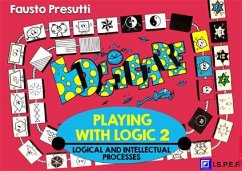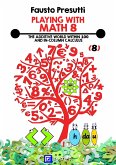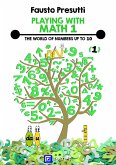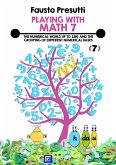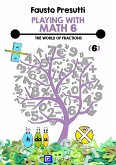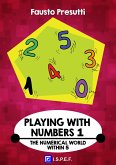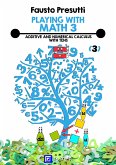PLAYING WITH LOGIC 2 is a teaching tool full of game exercises, that allows you to identify the psycho-cognitive skills of children and to develop their mental universe and their psychic world by:
- The structure and evolution of logical, intellectual and creative processes;
- The conceptualization of the incentive elements, spaces and environments represented
in-game design.
The game-exercises of PLAYING WITH LOGIC 2 develop the following concepts and topics:
1. VISUAL ATTENTION
2. IDENTITY AND LOGIC DESIGN
3. IDENTITY AND LOGICAL GROUPING
4. LOGICAL GROUPING
5. LOGICAL SETS
6. LOGICAL NEGATION
PLAYING WITH LOGIC is used simply by playing and learning with the children. The cheerful drawings and the stimulating graphical games easily become characters of the fantasy world created by children, building events and stories that allow them to spontaneously discover the rules of the game-exercises proposed.
Each exercise shows an activity-game full of characters and events to which underlies a logic that attracts the curiosity of the child, to take him, year after year, idea after idea, the use of a series of reasoning needed to understand and interpret the world around him.
- The structure and evolution of logical, intellectual and creative processes;
- The conceptualization of the incentive elements, spaces and environments represented
in-game design.
The game-exercises of PLAYING WITH LOGIC 2 develop the following concepts and topics:
1. VISUAL ATTENTION
2. IDENTITY AND LOGIC DESIGN
3. IDENTITY AND LOGICAL GROUPING
4. LOGICAL GROUPING
5. LOGICAL SETS
6. LOGICAL NEGATION
PLAYING WITH LOGIC is used simply by playing and learning with the children. The cheerful drawings and the stimulating graphical games easily become characters of the fantasy world created by children, building events and stories that allow them to spontaneously discover the rules of the game-exercises proposed.
Each exercise shows an activity-game full of characters and events to which underlies a logic that attracts the curiosity of the child, to take him, year after year, idea after idea, the use of a series of reasoning needed to understand and interpret the world around him.

